Interview: Solar Impulse
Bertrand Piccard and André Borschberg discuss what a solar plane means for exploration in the 21st century

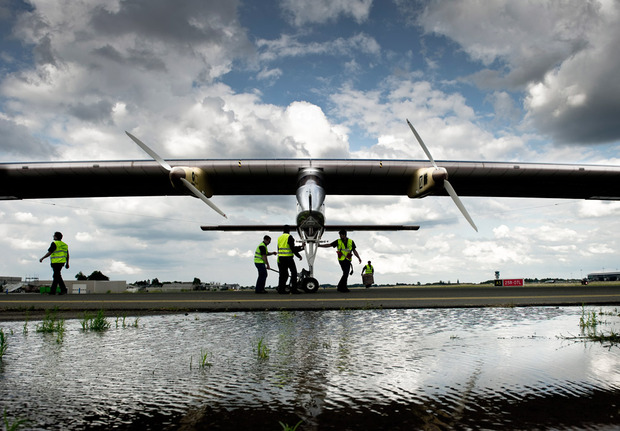
Just after midnight on 4 May 2013, a plane eased into Phoenix’s Sky Harbor International Airport after completing a journey from Moffet Airfield near San Jose, CA. With the wingspan of an Airbus A340, it nevertheless landed as delicately as a single prop and even more quietly. Pilot Bertrand Piccard emerged and was greeted by André Borschberg, the other half of Solar Impulse‘s flight crew. Together, they celebrated the completion of the first leg of their trans-America journey on the HB-SIA, a solar plane that promises to rebrand renewable energy.
Sporting roughly the same energy output as the Wright Brothers’ 1903 plane, the HB-SIA is certainly not without its hurdles: a dedicated meteorologist pores over data and weather patterns to decide which days are suitable for flight, and launches are never certain more than a day in advance; in a strong headwind, it’s possible for the plane to drift in the opposite direction of its bearing. But Solar Impulse is focused on opportunity, not challenges—in this case, a piloted aircraft that can fly day and night without fuel.
Piccard and Borschberg are the picture of the contemporary explorer. Speaking with them, it’s easy to think that the road to sustainability isn’t wracked with impossibility and instead decorated with opportunity. The following edited interview with the Solar Impulse founders highlights their thoughts on exploration, dispelling the impossible and bringing solar outposts to rural Morocco.
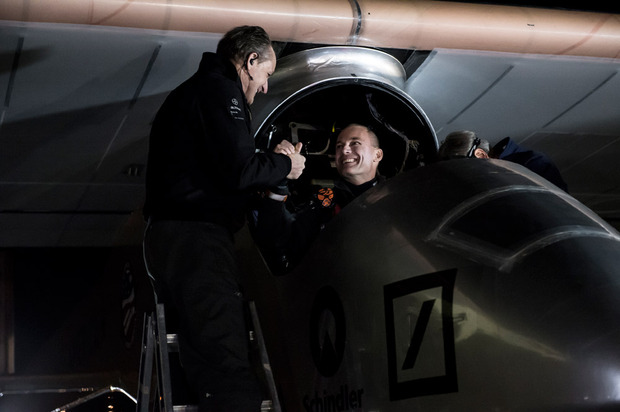
Now that most of the world is settled, how has the notion of exploration changed?
Bertrand Piccard: I was always fascinated by exploration as a state of mind. That means to open new dimensions, new territories, new technologies and so on. In the 21st century, the new challenges are not to go to the moon again or discover new continents. I believe the challenge now is to solve the big issues for humankind like poverty, human rights, government, medical resource and of course energy consumption. There is a lot to do, but we need the same spirit of exploration. We need to be open to the unknown, to be creative and innovative, and most of all we have to get rid of our old patterns of thinking.
“We have not tried to replicate, but to travel in a different way, to change the paradigm.” – André Borschberg
André Borschberg: There are no new places to go on the geographical dimension, but I guess there are places to go on the nano side and outside of the earth. It’s clear that with the number of people that we have on the planet, we have to think in a very different way—new solutions have to be developed. You can choose different ways, and we have chosen a way that is extreme, that is fully sustainable. We have not tried to replicate, but to travel in a different way, to change the paradigm. Solar Impulse is a very strong demonstration about the potential of change.
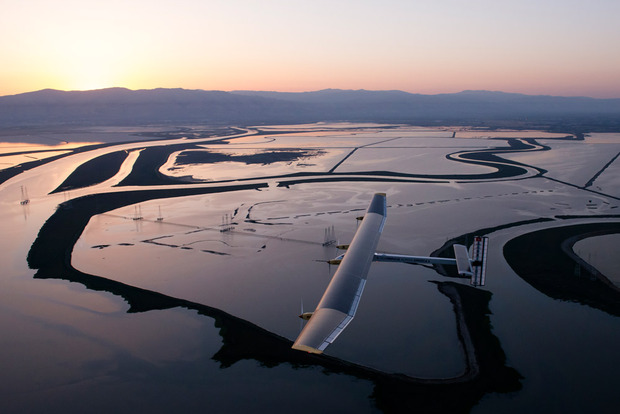
You’re choosing to do this the hard way—why is this methodology so important?
BP: The easy way is to fly with fuel, with technology that is old-fashioned and polluting. What we want to do is not really the hard way but the new way, and demonstrate that new technology can achieve what many people believe is impossible. We have an airplane that has achieved something that nobody thought was possible. When I was flying above the San Francisco Bay, I flew for 16 hours without need for refueling: I took off early morning, and I landed at 11 o’clock at night.
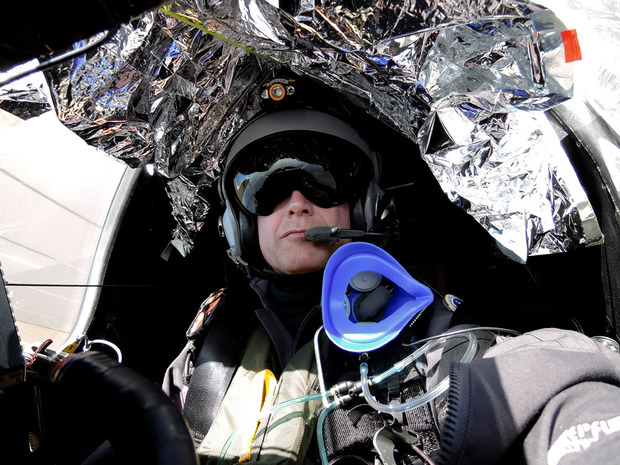
Bertrand, you come from a line of explorers—what have you learned from their example?
BP: My grandfather was the first man in the stratosphere, the first man to see the curvature of the earth with his own eyes. He invented the pressurized cabin and tested it under a stratospheric balloon ten miles up. Then he invented the bathyscaphe, which is a deep-sea submarine that he built with my father. My father, in a joint venture with the US Navy, made the deepest dive in the Mariana Trench along with Lt. Don Walsh.
I learned that you can always do more than what the common assumptions believe. When my father was ten miles up in the stratosphere, it was scientifically proven that no one could survive above 15,000 feet. It wasn’t true—he invented the pressurized cabin and proved that you could go far, far higher. When my father made the dive, everybody believed there was no life down there and the government could safely throw their radioactive waste into the trenches. His most important discovery was showing the life of fish down there and the existence of currents and countercurrents in the deepest depths.
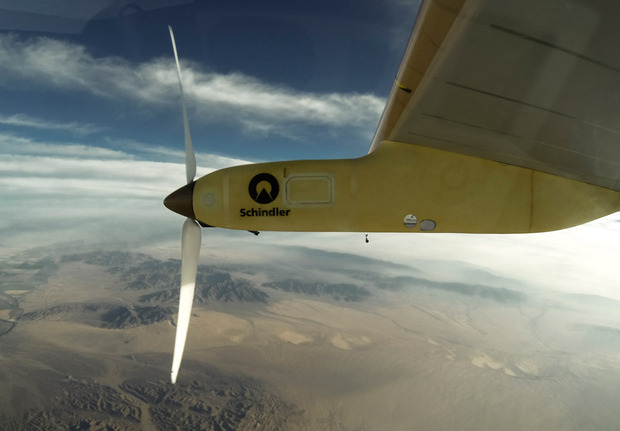
What is it like to fly in the HB-SIA?
“It’s amazing is to fly an airplane that theoretically flies forever.” – Bertrand Piccard
AB: The plane doesn’t have any noise, so you have a connection to nature that you don’t get in a noisy cabin. What’s truly impressive is that you can take off with empty batteries, fly the entire day and if you land at the end of the day, you will land with full batteries. This is energy that you could bring to the grid or use for your needs—that’s the most important dimension.
BP: It’s amazing is to fly an airplane that theoretically flies forever. The more you fly, the more energy you have. You store energy in your batteries, so you can fly through the night into the next morning if you want.

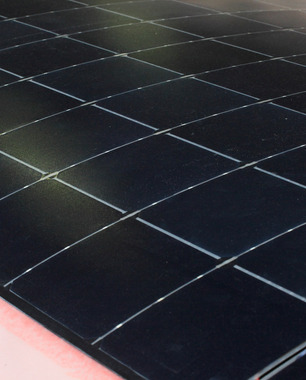
What does Solar Impulse mean for aviation and other industries?
AB: I think people in aviation like the project because they know they need to think about the post-fuel era. They work on optimizing airplanes and reducing consumption, but they know they will have to think of something new and different—they see Solar Impulse as expressing a vision for this future.
BP: We have the best electric engines, batteries, insulation, materials and lighting systems. This airplane is so efficient, and the technology we have on board could be used everywhere: cars, houses, cooling, heating and so on. If these technologies on Solar Impulse were used on a global scale, we could cut energy consumption in half.

Many people feel helpless or indifferent when it comes to renewable energy. What does Solar Impulse mean for people on the ground?
BP: I think a lot of people feel helpless and isolated when it comes to renewable energy. The goal of Solar Impulse is to create a community of people. We hope that we will have millions of people to unite under a powerful and unified voice.
AB: When we arrived in Morocco, there were a lot of villages that aren’t linked to the energy grid, and the government had proposed to provide them with solar grids. They were resistant at first, but when they saw the airplane, it changed their minds about the technology.
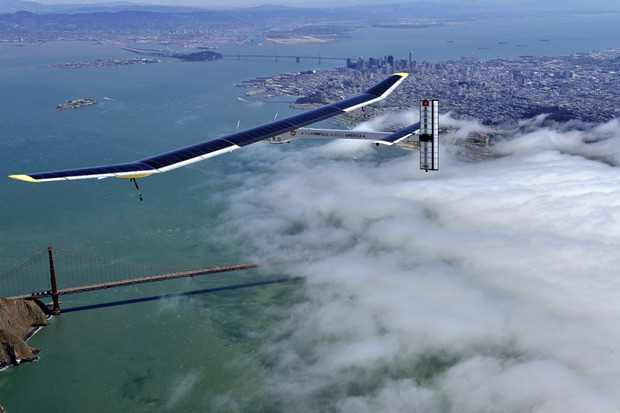
People go a little misty-eyed when they see the plane. Why do you think this project has been so impactful?
AB: Probably because it’s a different way of thinking, a different way of looking at these technologies. Speed is the most important part of travel, and people don’t really give much thought to how you get there.
Images courtesy of Solar Impulse












